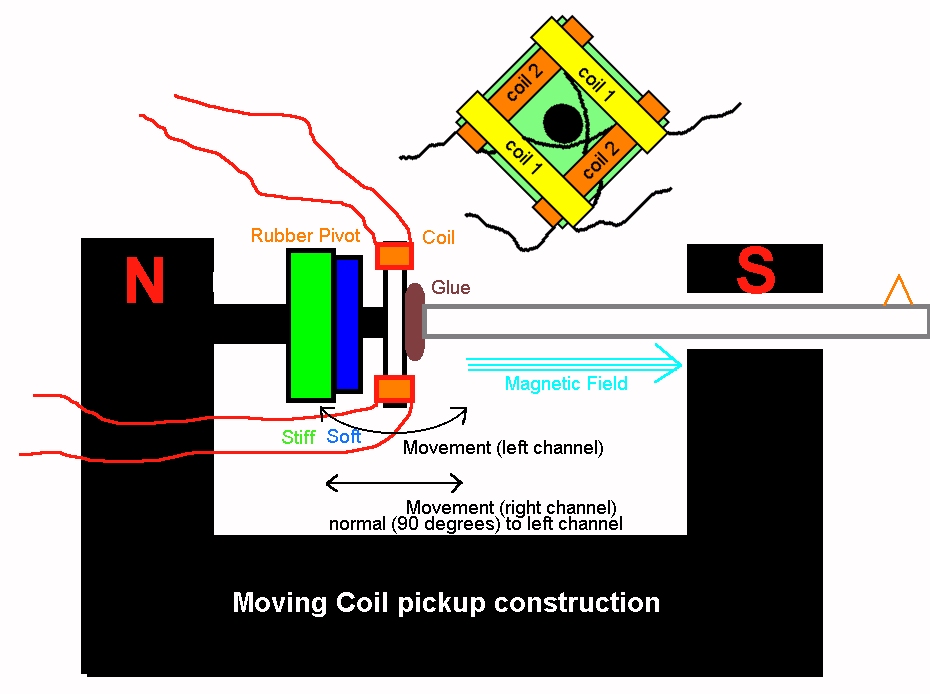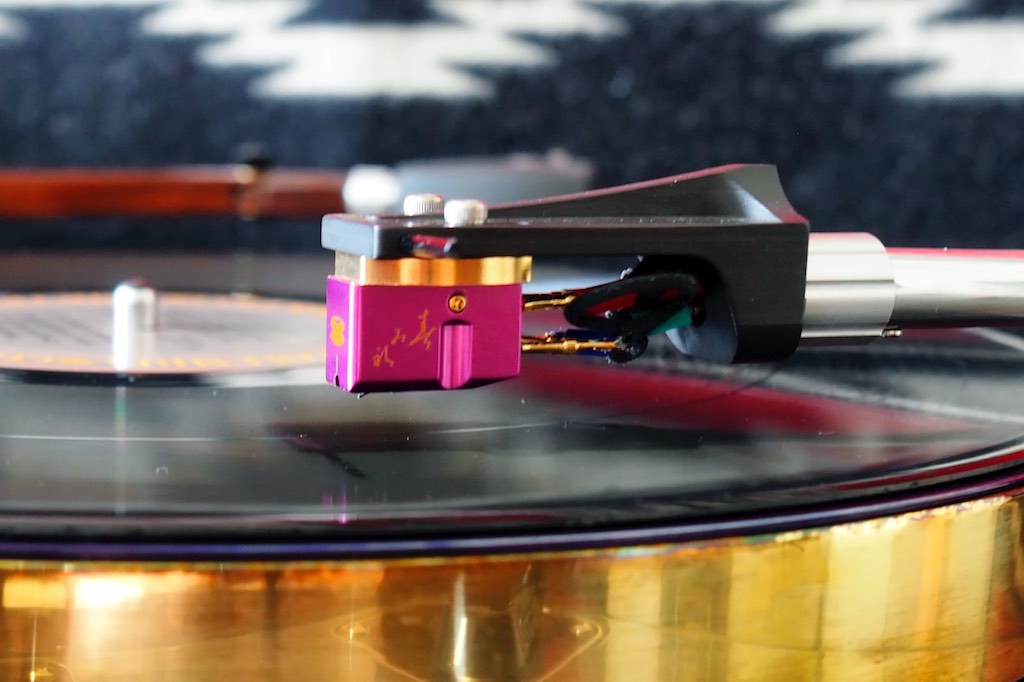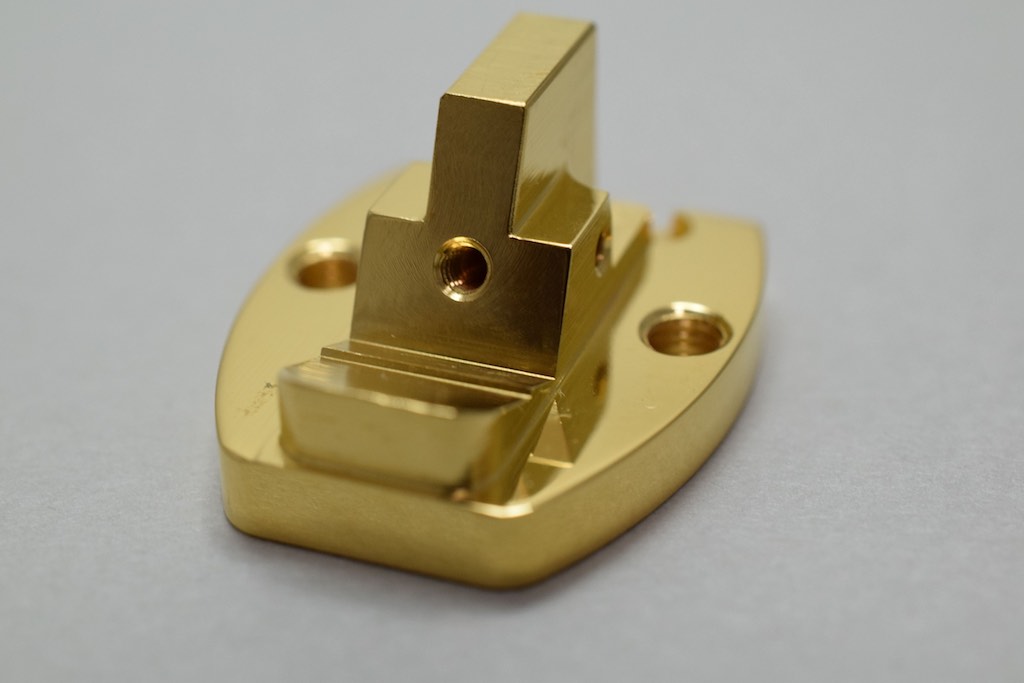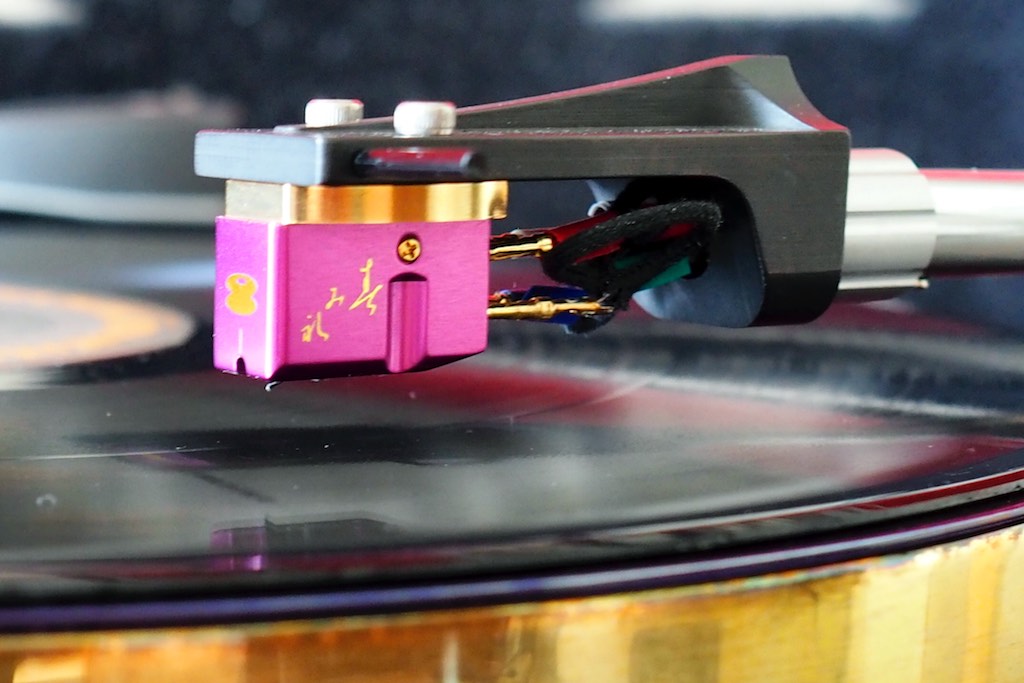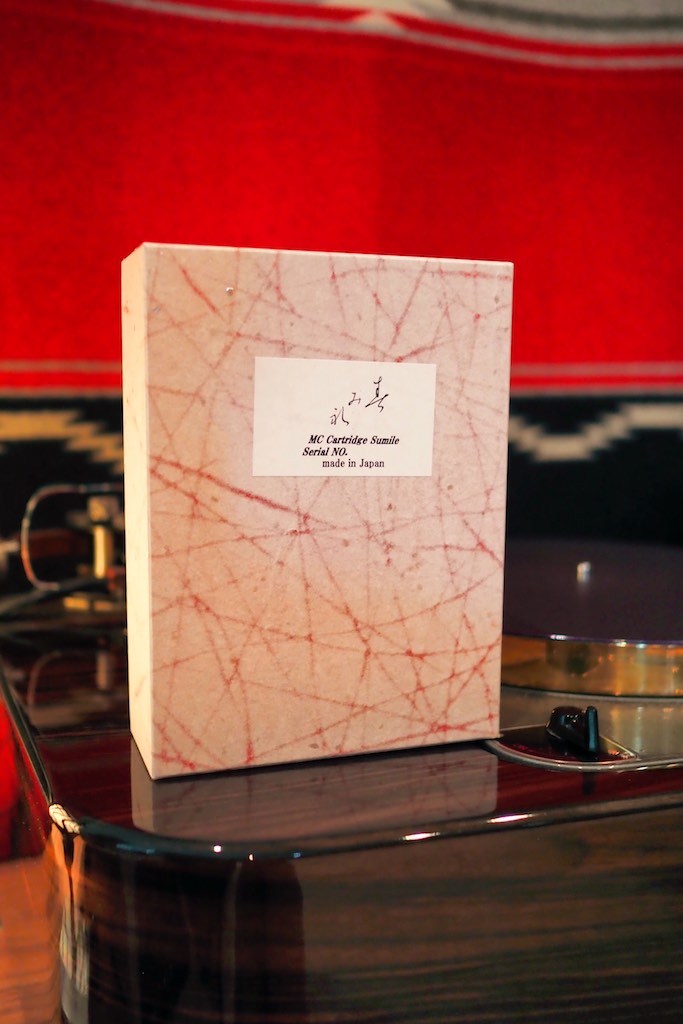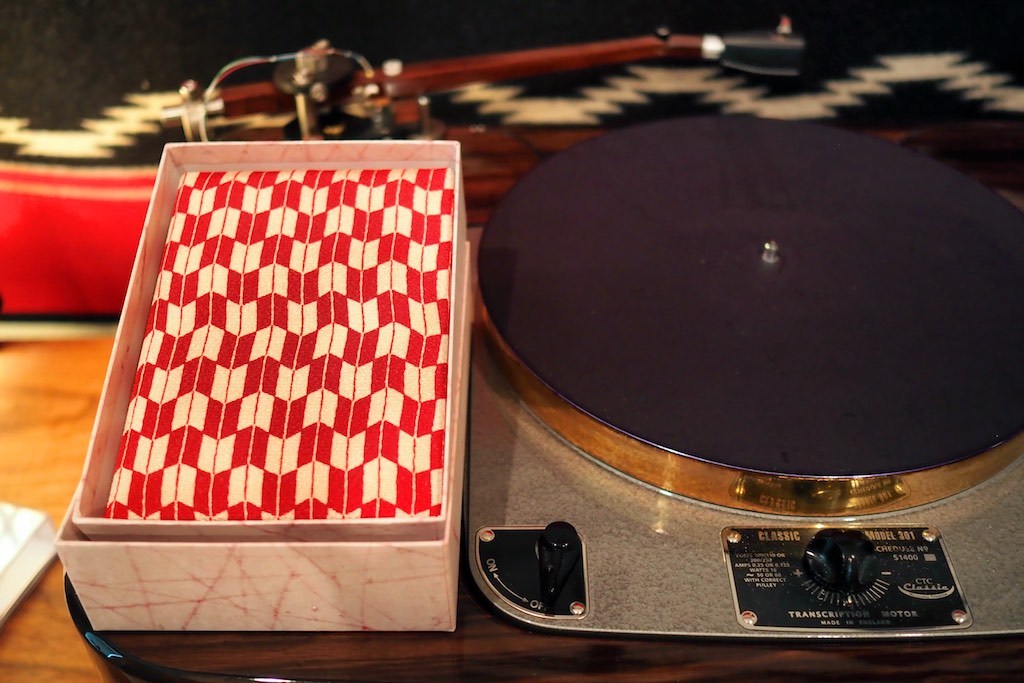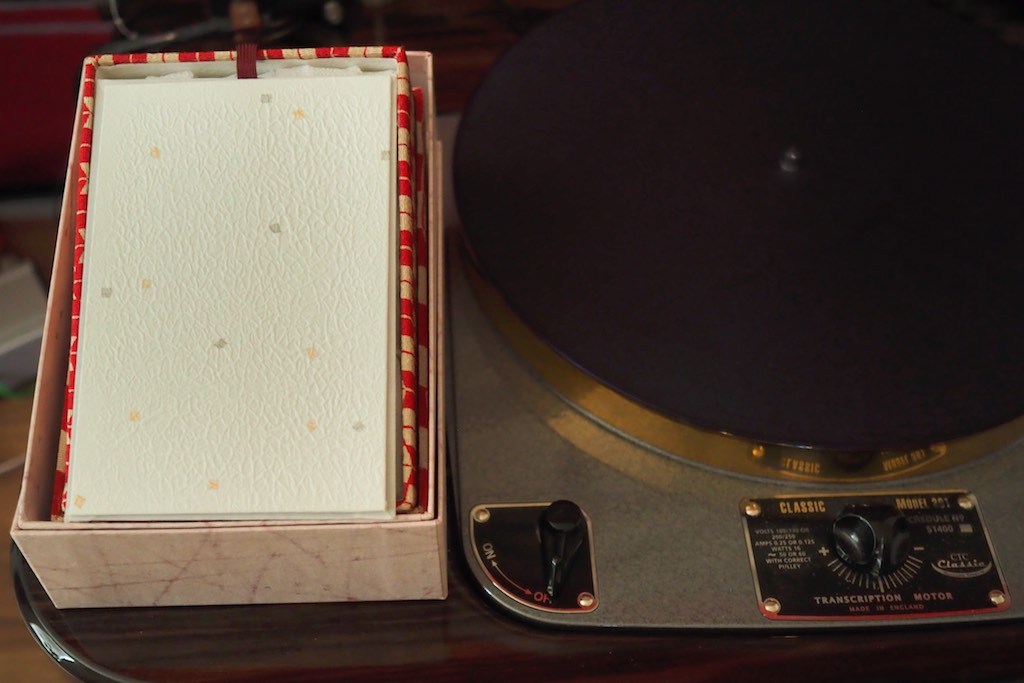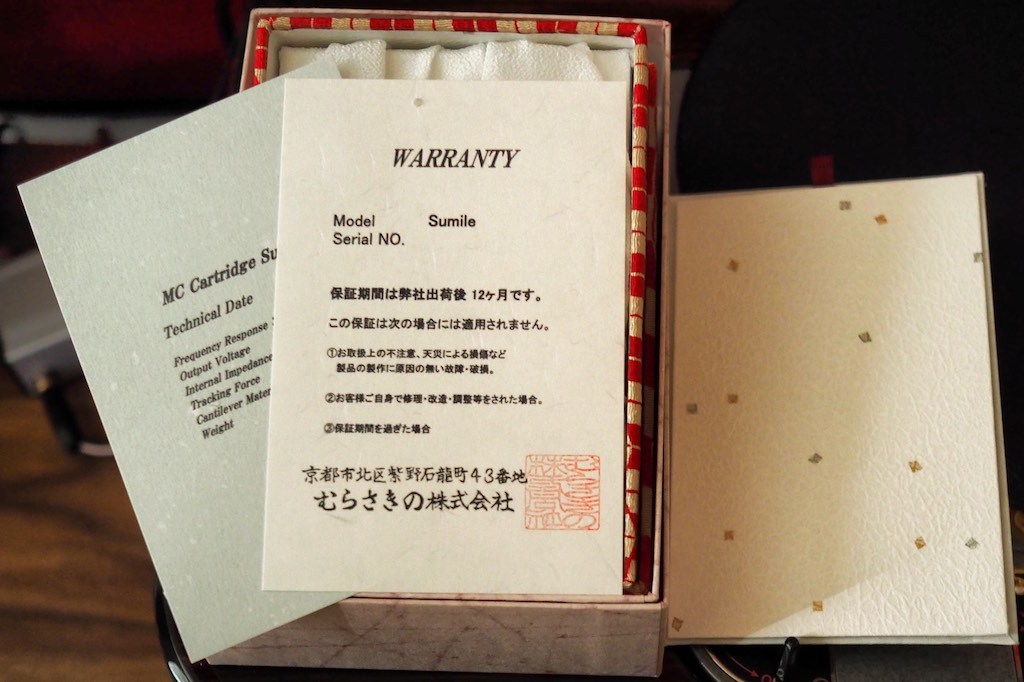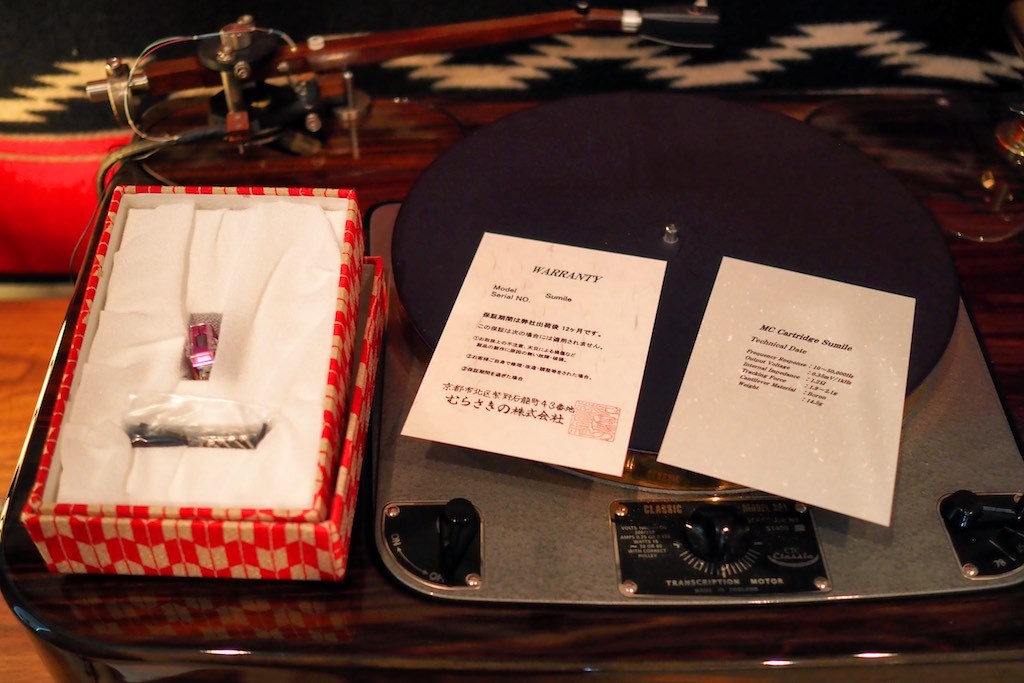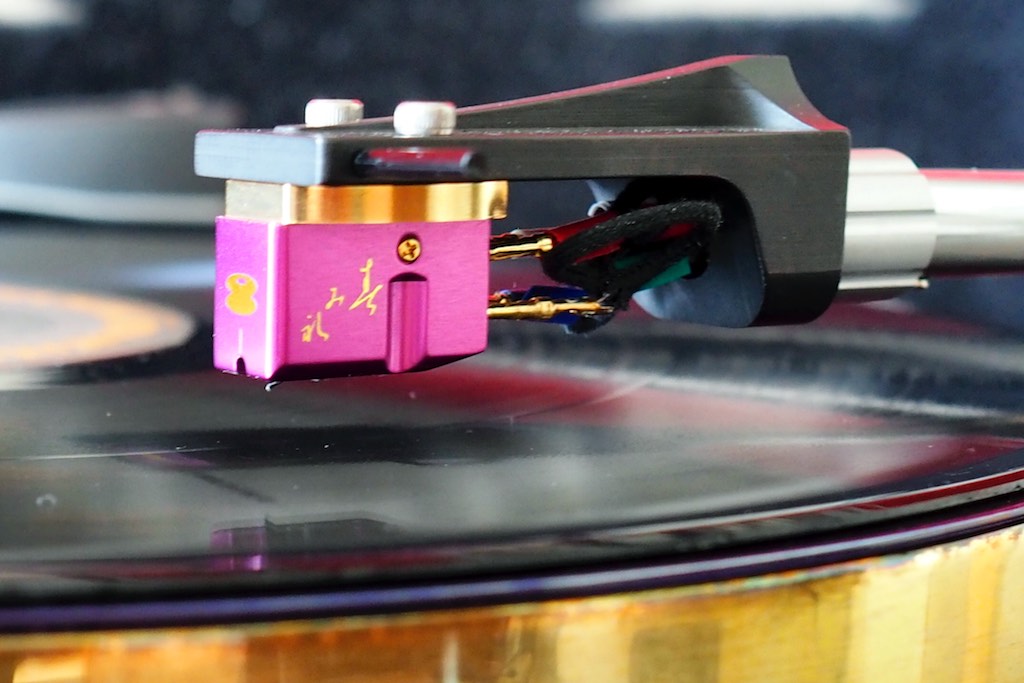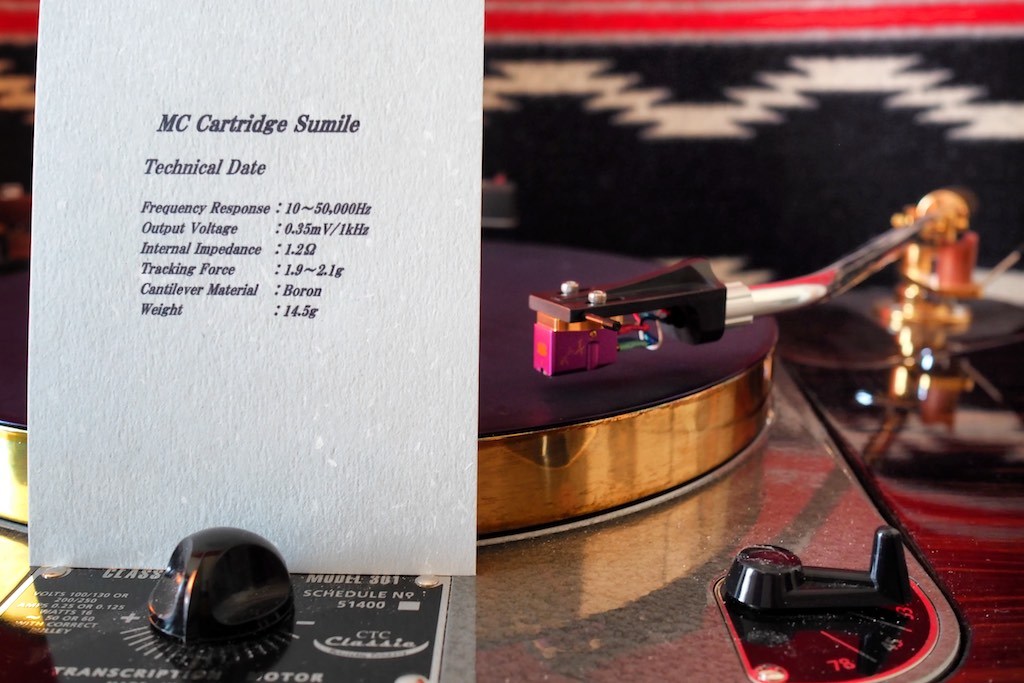This weekend I've been hard at work on the Positive Feedback article about the impressive Murasakino Musique Analogue ‘Sumile’ MC phonograph cartridge.
Over the last few weeks I've got a lot of the writing done for the article, and I'm hoping to wrap it up today, but if not, in the next few days, if I can devote some time in the evenings to writing.
Until the finished review is published at Positive Feedback, I thought I'd give you a little preview with part of the introduction from the article.
Enjoy!
¸¸.•*¨*•♫♪¸¸.•*¨*•♫♪¸¸.•*¨*•♫♪
The Murasakino Musique Analogue ‘Sumile’ MC Phonograph Cartridge from Japan!
By Jeff Day
Ever since the first moving-coil phonograph cartridge was developed in 1948 by Holger Christian Arenstein (the Ortofon Mono-A), phono cartridge designers have been working at maximizing & refining the performance of moving-coil cartridges by trying various topologies & materials combinations for the stylus, cantilever, coil wire, suspension, magnets, pole pieces, internal wiring, cartridge housings, cartridge pins, and so forth.
The idea of a moving-coil cartridge as an electro-mechanical device seems simple enough. As it traces the record groove, the stylus/cantilever is moved by the tiny modulations of the record grooves' mechanically encoded waveform, which moves the coil connected to it in a magnetic field, resulting in a weak electrical signal reproducing the waveform, which can then be amplified and played through loudspeakers as music.
However, when you consider that each part of the moving-coil cartridge can be made of different materials, have different shapes, have different internal topology, etc., the amount of potential combinations is staggeringly large.
For example, just a few of the questions a phono cartridge designer might ask are, "What material do I choose for a stylus? What shape of stylus do I choose? What material do I choose for a cantilever? What dimensions do I choose for a cantilever? What material do I choose for the suspension? How many turns of wire for the coil should I choose? What material should I make the coil out of? What dimensions of wire should I use in the coil? What magnet material should I use? What magnet field strength should I use? What kind of wire do I wire it with internally? What pins should I use for connections? What material should I make the base out of? What material should I make the body out of?"
You get the idea, there's an almost endless list of questions and permutations one could entertain when designing a moving coil cartridge, and each designer will make certain choices to achieve what they want musically & sonically from a cartridge.
Mr. Daisuke Asai and Murasakino, Ltd.
Mr. Daisuke Asai is the designer of the state-of-art Murasakino Musique Analogue Sumile moving-coil phonograph cartridge featured in this article.
Mr. Daisuke Asai told me that he has been interested in audio since his university days, and has enjoyed listening to analogue discs with tube amplifiers that he has built himself.
Asai-san told me, “The first tube amp I built was a single-ended amp with 46 tubes in a triode connection. I was well satisfied with the sound of this amp even though the power was very small.”
“Back then I was employed by Denon Lab, mainly handling DALI and Infinity loudspeakers, which were imported and distributed by Denon Lab for the domestic market.”
“However, when Denon Lab was integrated into D&M Holding (Denon & Marantz), I left and went to work for A&M Limited (Air Tight), so I could utilize my knowledge of tube amplifiers at Air Tight.”
“At A&M, I was managing tests and inspections of Air Tight products, as well as inspections and sales of Transrotor products, which A&M was importing. I was very thankful that I had a chance to work with the designer of Air Tight, Mr. Ishiguro, who I learned a great deal from.”
“It was difficult for me to develop my own products while working as a staff person for a manufacturer, so I decided to go out on my own and I established my own company, Murasakino, Ltd., in Kyoto, Japan.”
The Murasakino Musique Analogue ‘Sumile’ Moving-Coil Phonograph Cartridge
The Murasakino Musique Analogue ‘Sumile’ moving-coil phonograph cartridge is a state-of-art phonograph cartridge that is meticulously hand-crafted down to the finest details.
Asai-san told me, “I did a lot of tests in the development of the Sumile so I would not get only the best sound, but I also wanted to make the Sumile a beautiful MC cartridge whose design would please many people.”
“I think the selection of the materials used in the design are a most important consideration. Just choosing expensive materials is not always the best choice, but rather choosing materials that combine complementary eigentones to give a good overall reverberation is most important. Many tests are necessary to discover the best combination of eigentones for a particular phono cartridge design.” (An eigentone is a characteristic resonance frequency of a material - Jeff)
Asai-san says he has achieved what he considers an optimum relationship between output voltage and impedance in the Sumile's design, of 1.2 Ohm and 0.35mV, respectively.
Asai-san has achieved this very low impedance of 1.2 Ohms by using fewer turns in the moving coil (the fewer the turns in the coil the lower the resistance).
Generally speaking, having fewer turns in a coil is associated with the coil being more responsive to subtle stylus movements, having less signal loss due to the fewer coils, but with fewer coil turns the output voltage is generally decreased.
However, in the Sumile’s case, the output voltage is 0.35mV, which is a bit higher than my Ortofon SPU Classic GM MkII’s 0.2mV, slightly higher than my Denon DL-103’s 0.3mV, albeit quite a lot lower than my EMT TSD-15N’s robust output of 1.05mV.
Asai-san chose neodymium for the magnet, solid boron for the cantilever, and diamond for the stylus, in a semi line-contact shape.
Asai-san chose a base of stainless steel for the Sumile, “The cartridge’s base to which the power-generation system, including the coil, are attached is made of stainless steel. Stainless steel is renowned for its stable sound quality and has been incorporated into products such as tonearms (and some cartridges) by many manufacturers. Compared to aluminum, stainless steel is more rigid and harder to process, but the high-quality result makes the difficulty worthwhile. The creates a sound for the Sumile that is just not possible from aluminum.”
“But not stopping there, we bring the Sumile to perfection by gold plating the processed stainless steel. Gold plating not only coats and protects the stainless steel, but also improves the overall sound quality. Gold plating the Sumile base was inspired by how various platings on wind instruments transform and improve their sound.”
Asai-san plays the oboe for pleasure, and one of his benchmarks for a phono cartridge is how well it can reproduce the sound of an oboe, which is a double-reed woodwind instrument that generally plays in the treble or soprano range. Notably, gold plating is used strategically on the keys of the oboe to soften and beautify the tone, and was the inspiration for gold plating the Sumile’s stainless steel base.
The Sumile’s body is constructed of an A5056 aluminum alloy, finished in an attractive violet finish (Sumile means “violet” in Japanese).
The Sumile’s body is highlighted with gold script, originally developed by the chief priest of a temple in Kyoto 1000 years ago, and the three letters say ‘Sumile’ in Japanese: す(Su) み(mi) れ(le).
There is also a gold logo design on the front of the Sumile, comprised of two vertically stacked circles.
Asai-san said, “The circle at the top figuratively represents a phonograph record, and the one at the bottom represents the platter of a turntable. By making these two circles contact each other, we attempted to figuratively represent the moment when the disk is placed onto the platter, as this is a most exciting moment for analog-music enthusiasts when they play a record!”
The Sumile came beautifully packaged in an artful craft-paper box with a violet-hued finish.
Upon opening the Sumile’s exterior box, within I found another protective box covered in a burgundy & cream patterned fabric.
Upon opening the inner box, I found a nice art paper & fabric cover, and the warranty & specifications cards.
And under those – Voilà! – was the Sumile cartridge along with some mounting tools & screws.
Normally I wouldn’t say much about packaging, but the Sumile’s was done so artfully, and with such care & attention to detail, that I thought it was worth mentioning, because that same artful attention to detail is what sets the Sumile apart not only in packaging, but in its design & construction as well.
As I held the Sumile in my hand and inspected its ultra-quality of materials, hand-crafted nature, and impeccable fit & finish, I certainly got a sense of the luxury and quality evoked by this exotic gem of a cartridge, which I’m sure is the impression that Mr. Daisuke Asai of Murasakino Ltd., who designed the Sumile, desired for his “ultimate analog product”.
When I look at the Sumile, touch it, and read through Mr. Daisuke Asai’s messages, it is obvious to me that he has put a great deal of planning, insight, careful choice of materials, and listening into the design of the Sumile, and along with the attention to detail to its beautiful finish and packaging, it is clear that the Sumile embodies Asai-san’s vision for the ultimate moving-coil phono cartridge.
As printed on the technical data card included with the Sumile, the specifications are as follows:
Frequency Response: 10 to ~50,000Hz
Output Voltage: 0.35mV/1kHz
Internal Impedance: 1.2 Ohms
Tracking Force: 1.9 to 2.1 grams
Cantilever Material: Boron
Weight: 14.5 grams
As I mentioned earlier, the Sumile moving-coil cartridge has a low internal impedance of 1.2 Ohm.
In comparison, my Ortofon SPU Classic GM MkII has an internal impedance of 2 Ohms, my EMT TSD-15N has an internal impedance of 24 Ohms, and my Denon DL-103 has an internal impedance of 40 Ohms.
So, the 1.2 Ohms of the Sumile is very low indeed, which should be taken into account when matching it with a step-up transformer (SUT), as it’s more toward the lowish SPU internal impedance end of the spectrum (2 Ohms) – but even lower at 1.2 Ohms – than at the higher internal impedance end of the spectrum, like the venerable Denon DL-103’s 40 Ohms.
¸¸.•*¨*•♫♪¸¸.•*¨*•♫♪¸¸.•*¨*•♫♪
Ok, that's it for now, and I hope you enjoyed that little glimpse into the coming Positive Feedback article about the Sumile phono cartridge.
As always, thanks for stopping by, and may the tone be with you!




